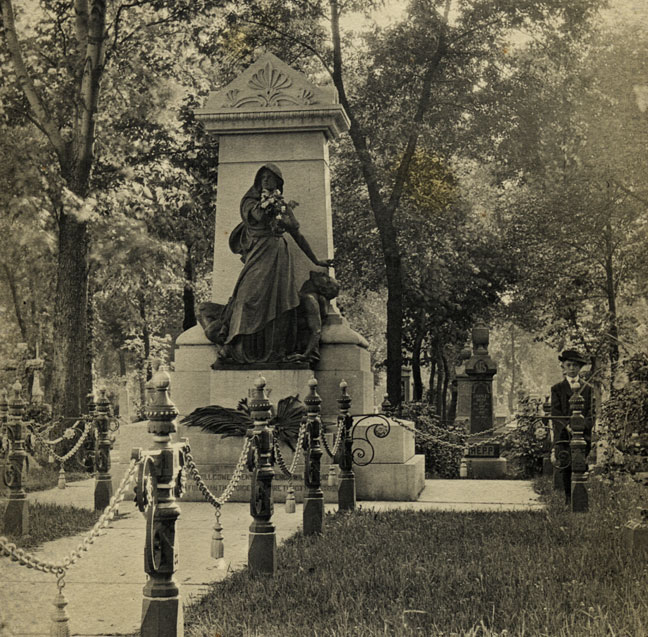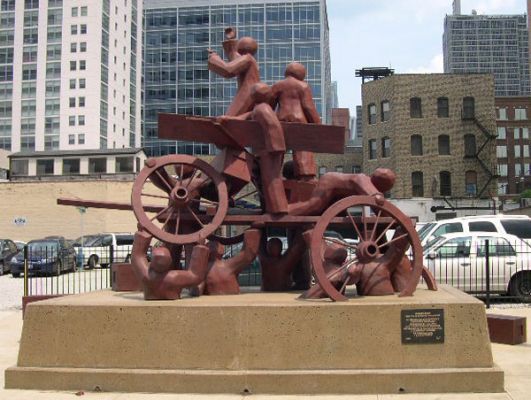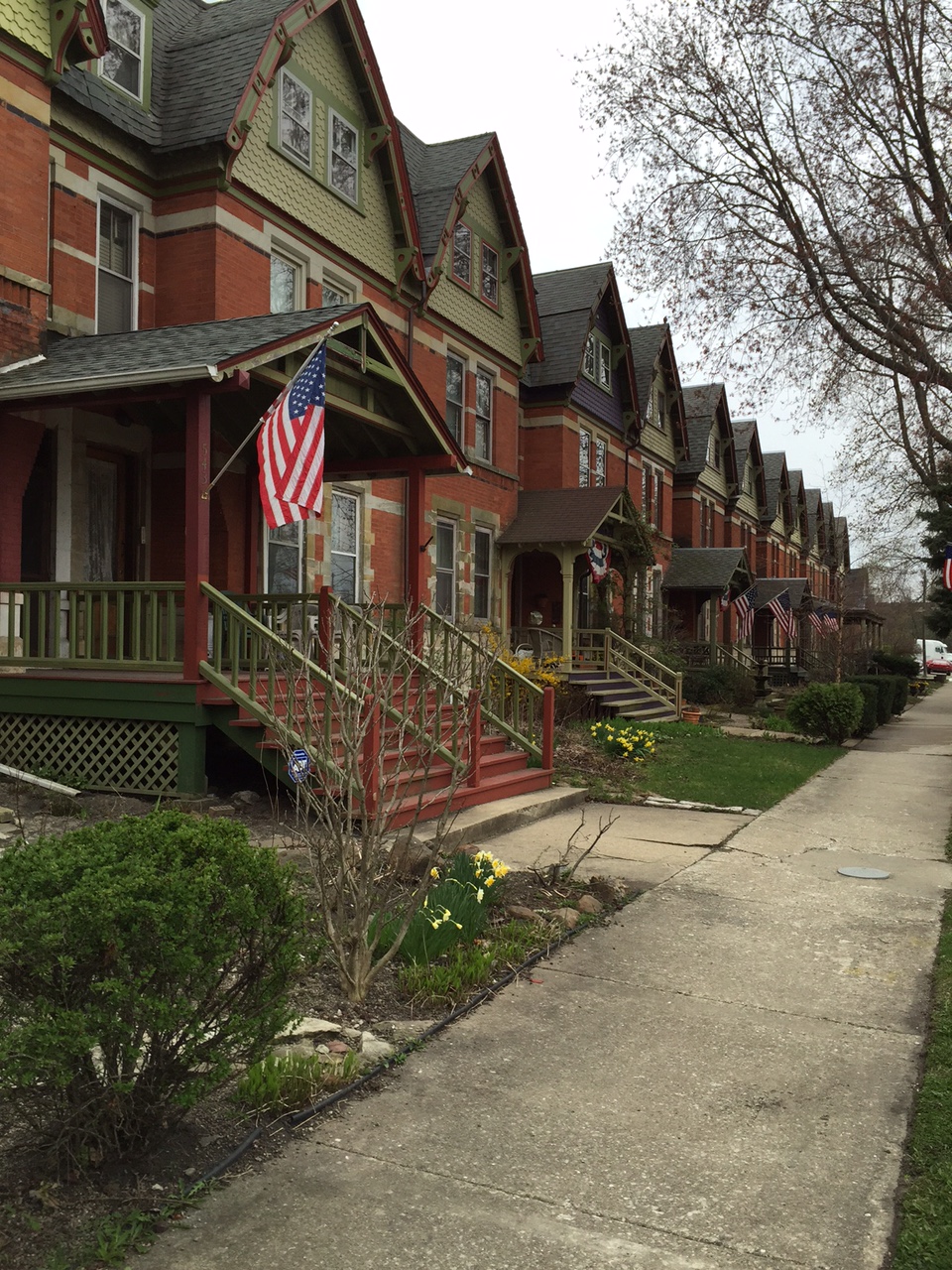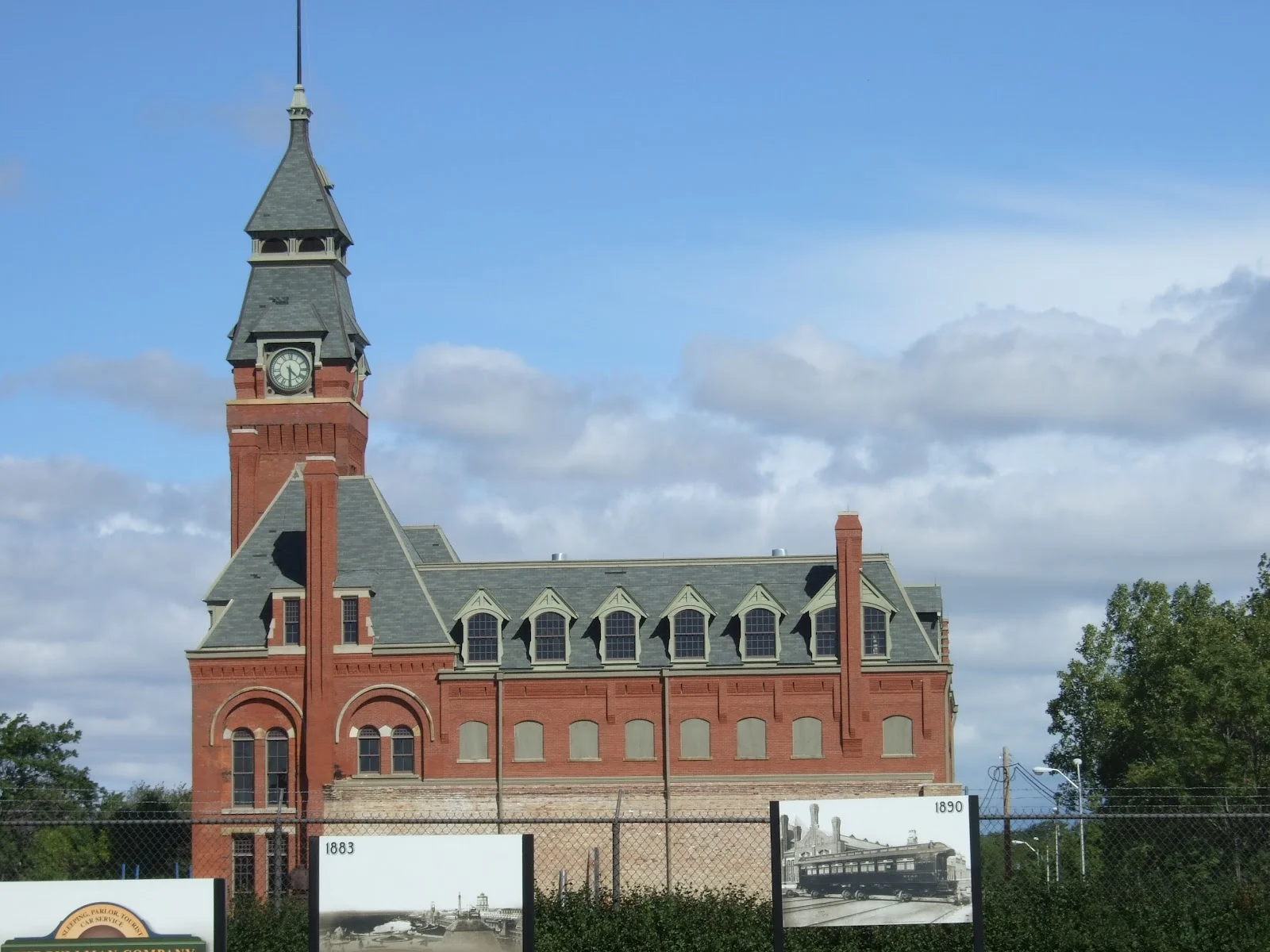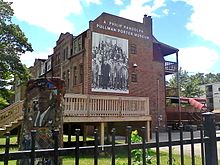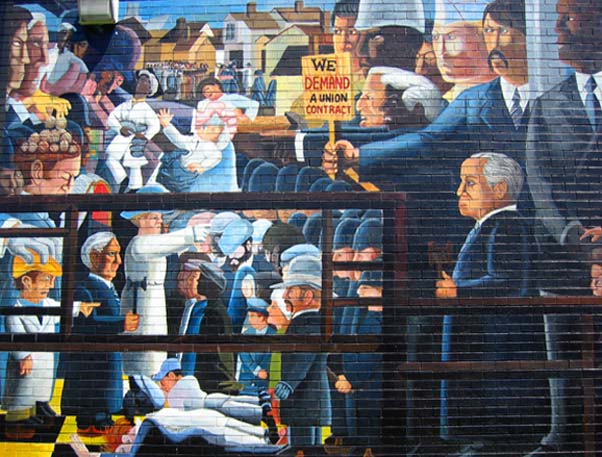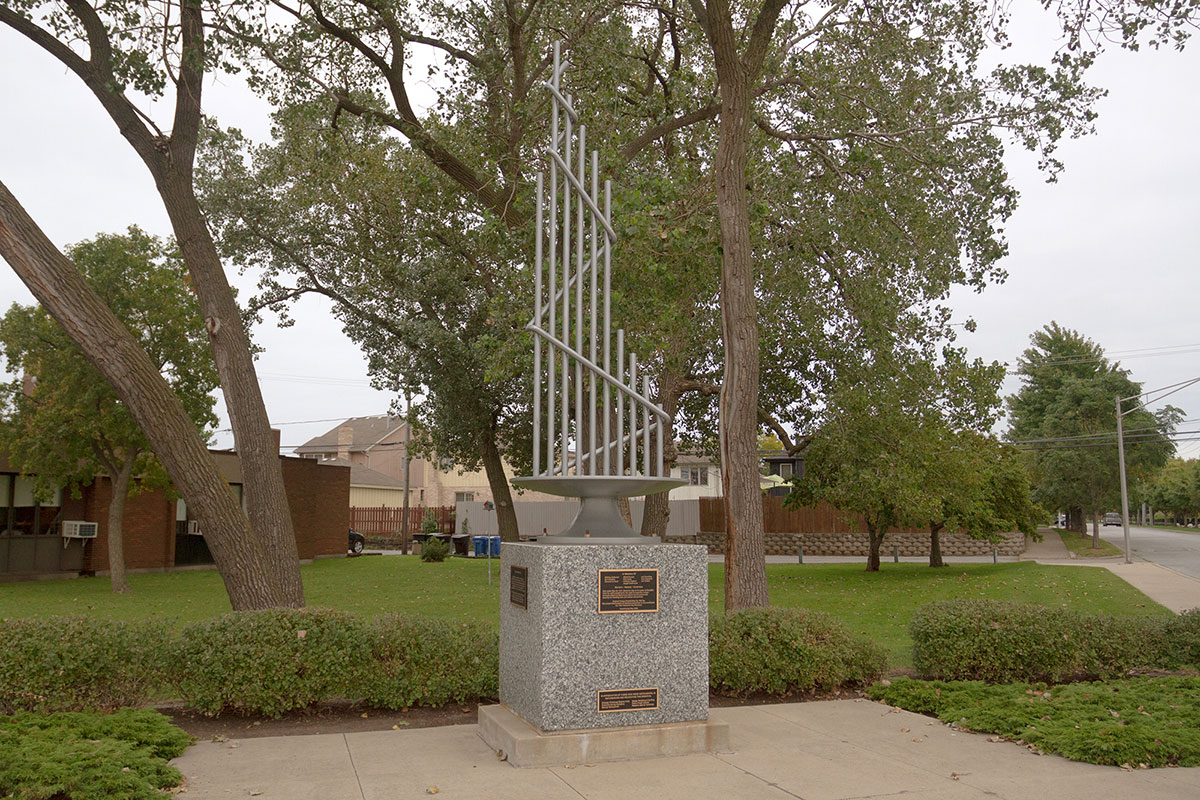Chicago
Chicago
Chicago has such a rich labor history that you could spend an entire day (or longer) visiting the important sites, monuments and murals that tell the workers' stories. The following are just some of the highlights to this incredible history.
Haymarket
In connection with the nation-wide strike for the 8-hour workday, which began May 1, 1886, a mass meeting was held on the night of May 4th in the Chicago haymarket. Its purpose was to protest a police attack on Union pickets at McCormick Harvesting Machine Company in which workers were injured and killed. When police ordered the haymarket protest meeting to disperse (peaceful though it was), a bomb was thrown toward the police by an unknown person. The police responded by firing at the crowd. This became known as the "Haymarket Riot," now more properly named the Haymarket Tragedy. The 8-Hour Day Movement was destroyed in the nation-wide anti-labor hysteria which followed. Two monuments commemorate the tragedy.
Haymarket Memorial 175 N. Desplaines St., Chicago Commemorated in 2004, this sculpture by Mary Brogger marks the site of the Haymarket Tragedy. Each year a different labor organization from around the world places a plaque at the memorial in spirit of international workers solidarity. You can purchase a walking tour guide book to history of the Haymarket Tragedy from the ILHS bookstore.
Haymarket Monument 863 Desplaines Ave, Forest Park The ILHS holds the deed to the Haymarket Monument, in Forest Home Cemetery. Learn more about visiting this world-renowned monument here.
PULLMAN
Pullman Visitor National Historical Park, 610 E. 111th St., Chicago The Pullman "model town" looks much as it did in 1894 at the time of the Great Pullman Strike. Walk the streets and feel like you stepped back in time. See the historic clock tower and factory. Look at the huge outdoor mural painting, entitled "Visual Interpretations of Pullman." This dramatic piece of public art was completed by students from the American Academy of Art in 1996. Visitors' Building and step inside to look at displays of historical artifacts. For Visitor Center hours and information check here. You can also purchase a walking tour guide book to the Pullman area from the ILHS bookstore.
National A Philip Randolph Pullman Porter Museum, 10406 S. Maryland Ave, Chicago This one-of-a-kind museum features tells the history of the first national black labor union in the United States. A new mural graces the outside of the building. For Museum hours and information check here.
Stockyards
Old Stone Gate Exchange and 42nd Street, Chicago The Old Stone Gate to the Chicago Stockyards became a National Historical Landmark in 1981. It was acquired by the City when the Stockyards officially closed in 1971, after which all of the meat packing industry buildings were razed. The area is now devoted to “light” industry. The Old Stone Gate was erected in 1879, replacing the original wooden gate erected at the founding of the Union Stock Yard and Transit Company facilities in 1865.
History of the Packinghouse Worker Mural, 4859 S. Wabash, Chicago The History of the Packinghouse Worker mural painted in 1974 vividly tells the history of how those who worked in Chicago's stockyards fought for fair wages and safe working conditions.
STEEL WORKERS
Republic Steel Memorial Day Massacre Statue, 117th and Avenue O, Chicago Ten demonstrators were killed by police bullets during the "Little Steel Strike" of 1937. When several smaller steelmakers, including Republic Steel, refused to follow the lead of U.S. Steel (Big Steel) by signing a union contract, a strike was called by the Steel Workers Organizing Committee (SWOC) of the Congress of Industrial Organizations (CIO). As a show of support, hundreds of SWOC sympathizers from all around Chicago gathered on Memorial Day at Sam's Place, where the SWOC had its strike headquarters. After a round of speeches, the crowd began a march across the prairie and toward the Republic Steel mill. They were stopped midway by a formation of Chicago police, who fired into the crowd and pursued the people as they fled. A sculpture to honor those fallen was created by Ed Blazak, a former employee of the Republic Steel company. It was originally sited on the property of Republic Steel near Burley Avenue. The sculpture, with its ten steel pipes, represent the smoke stakes of the ten steel mills within the area, now closed. They can also be Representative of the slain ten demonstrators. The ILHS sells a DVD containing newsreel footage of the event at our bookstore.
Steelworkers Park East 87th at Lake Michigan, Chicago This unique park was once part of the US Steel Complex known as South Works. Today it is a park that honors the thousands of workers who labored in the city's steel industry. Learn more about this park here.
